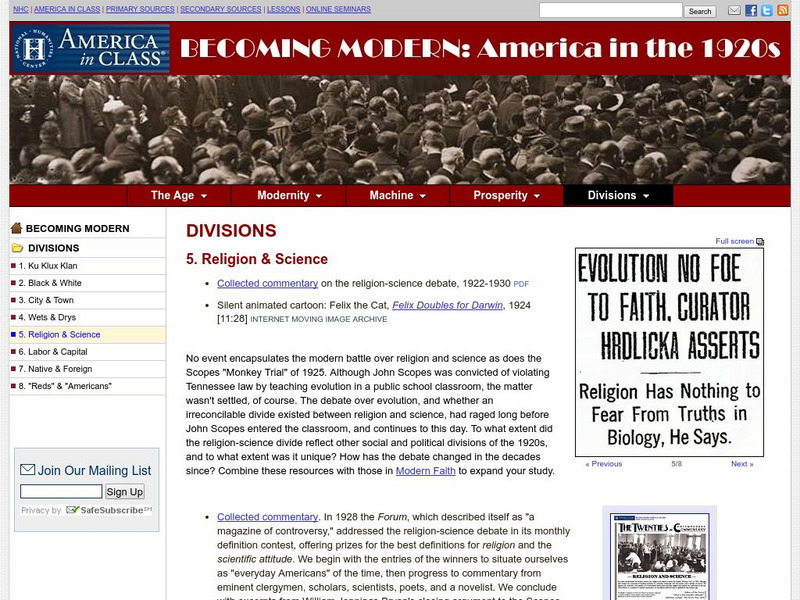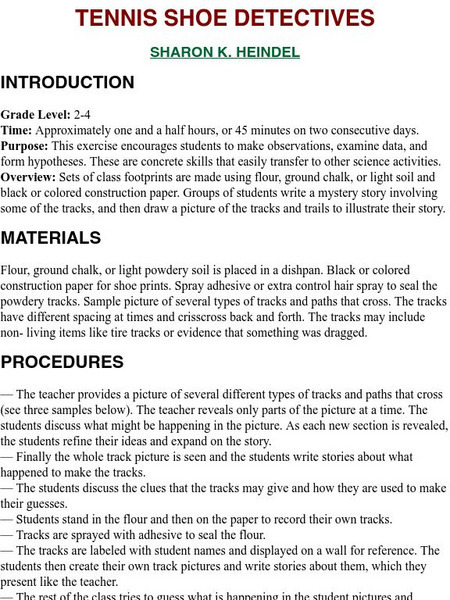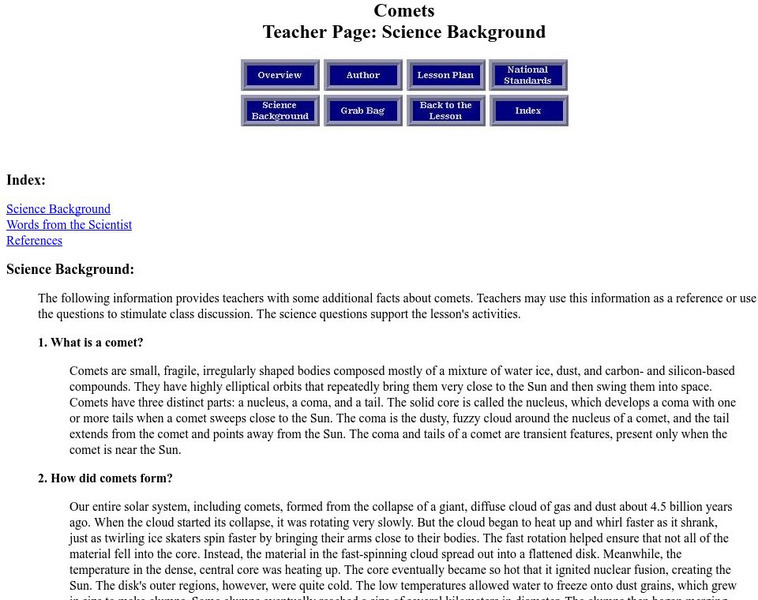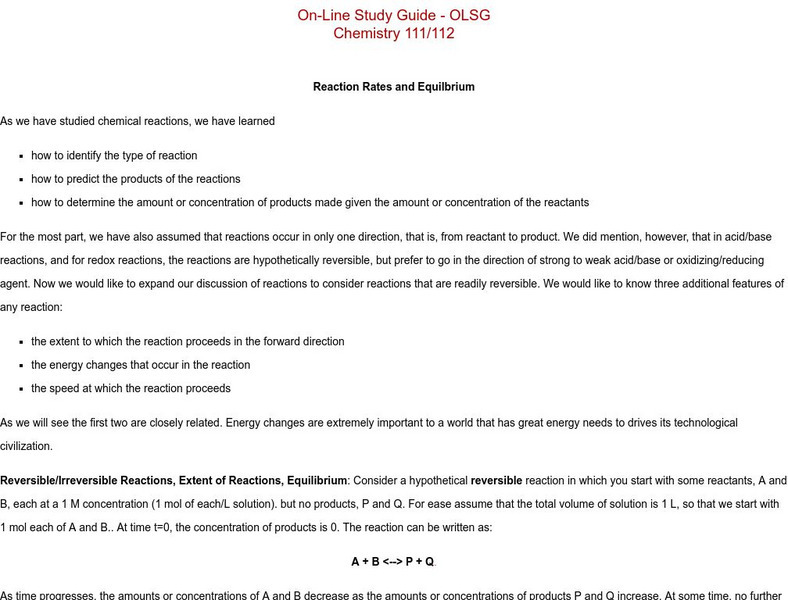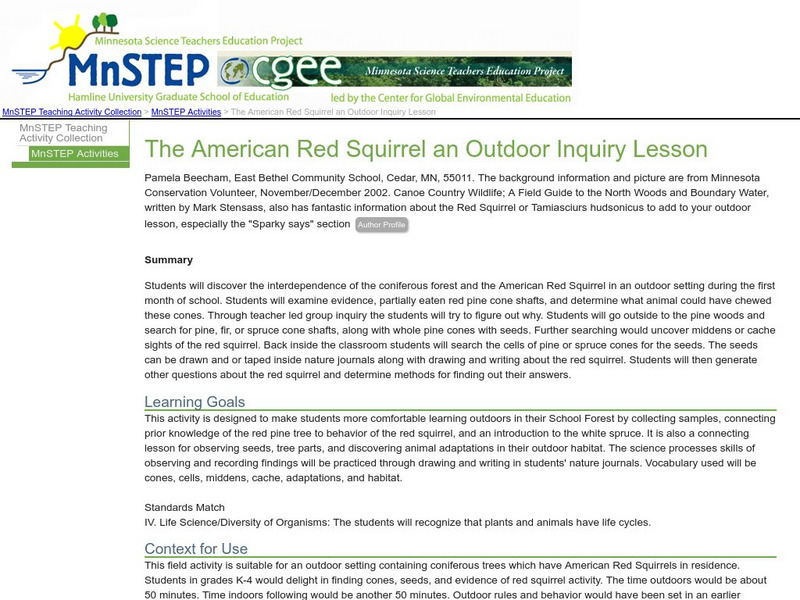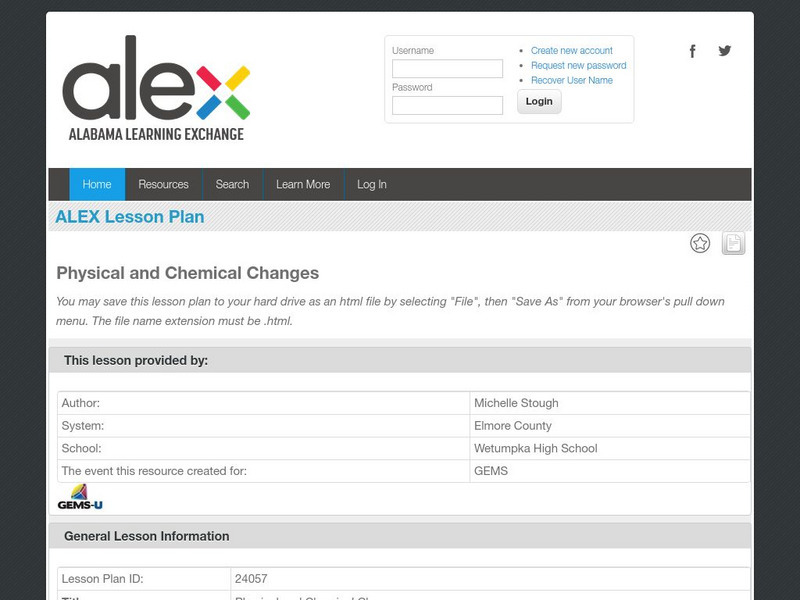EngageNY
TASC Transition Curriculum: Workshop 15
What do a cheetah, Audi commercial, and air have in common? They're all topics of an engaging inquiry-based, hands-on workshop for educators about background knowledge, reading strategies, the CER model, and argumentative writing. The...
National Humanities Center
National Humanities Center: America in Class: America in the 1920s: Religion & Science
The National Humanities Center presents collections of primary resources compatible with the Common Core State Standards - historical documents, literary texts, and works of art - thematically organized with notes and discussion...
Center for Innovation in Engineering and Science Education, Stevens Institute of Technology
Ciese Collaborative Projects: Bucket Buddies: Environmental Study
Bucket Buddies is an opportunity for learners to participate in a world-wide environmental study. By identifying organisms in pond water, participating classes can compare their findings, and look for relationships in data. In addition...
National Institutes of Health
Alcohol: Separating Fact From Fiction
Learners can use this site to observe the effects of alcohol on mice and discuss the ways in which alcohol harms and impairs the body. An online lesson, "Alcohol; Separating Fact From Fiction," has students watch video clips, engage in...
John F. Kennedy Center
The Kennedy Center: Balancing Mobiles
In this lesson plan, students will apply mathematical, science, and engineering concepts to experiment with balancing levers. They will learn to classify types of levers to design and build a simplified mobile. Students will explore...
University of California
Ucmp: Understanding Science: Tennis Shoe Detectives
A instructional activity where students take copies of their shoe prints, then create a story and illustrate it with pictures showing trails of footprints. Presented are samples of such trails that can be used to stimulate class...
Other
Odyssey of the Mind: Digging for Clues
Students explore archeology, dating methods, and the skills and technology needed to be an archeologist through the three activities provided. Activities require research of a historical period, class discussion and creative thinking.
Space Telescope Science Institute
Amazing Space: Comets
Amazing Science provides teachers with facts about comets that they can use as a reference or to stimulate class discussion. The science questions support the instructional activity's activities.
ArtsNow
Arts Now Learning: Using Tableau and Role Drama to Examine the Ecosystem [Pdf]
In this activity, 4th graders use tableaux to dramatize their roles in the food chain of an ecosystem. Next, they write in role arguing why they are important to the ecosystem. This is followed by a debate in the format of a Character...
Other
On Line Study Guide/reaction Rates and Equilbrium
Here's a full and understandable discussion of Reaction Rates and Equilibrium.
PBS
Pbs Learning Media: Dna Structure and Function: Decoding Watson
Discover how the structure of DNA relates to its hereditary function in these videos from the American Masters film Decoding Watson. The first video, "DNA Structure and Function," [2:07] can be used with all middle and high school...
Science Education Resource Center at Carleton College
Serc: Energy Flow Through Organisms: Introduction to Photosynthesis/respiration
In this life science classroom activity, middle schoolers will use cooperative learning and whole class discussions to be introduced to the concept of energy flow through organisms, and understand the basic processes of photosynthesis...
PBS
Pbs Learning Media: Nova: Addiction: Community Screening Guide
NOVA Addiction is a film that explores the impact of the opioid epidemic on individuals and society, examines the neurobiology of opioid addiction, and discusses current harm reduction approaches and treatments and how they might be...
Science Education Resource Center at Carleton College
Serc: Mn Step: Rotation of the Earth
A KWL activity combined with a demonstration model. Students record their ideas and questions about why we have day and night. They then shine a flashlight (the Sun) on a rotating styrofoam ball (the Earth) and record their observations....
Khan Academy
Khan Academy: Treating Depression With Antidepressants
A discussion of the three classes of antidepressants: MAOI's, TCA's, and SSRI's used to treat depression.
Science Education Resource Center at Carleton College
Serc: Mn Step: The American Red Squirrel an Outdoor Inquiry Lesson
For this activity, students are presented with red pine cones that have been partly eaten by the American Red Squirrel, a fact that is not divulged to them at this stage. After a discussion of the possibilities, the class takes a walk in...
National Health Museum
Access Excellence: Using Probeware in Biology
This article discusses knowledge and skills developed by educators who use technology to teach science.
Alabama Learning Exchange
Alex: Gas Laws
The teacher will perform a demonstration of imploding a coke can. We will then discuss Boyle's law. After this discussion, we will conduct the science in motion lab "Boyle's Law". Each lab group will load their graphical results into a...
Alabama Learning Exchange
Alex: Physical and Chemical Changes
The teacher will conduct the whoosh bottle demonstration to engage students. The class will then begin discussion of endothermic and exothermic physical and chemical changes. The students will then conduct the Science in Motion lab...

